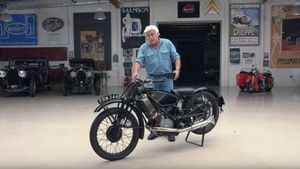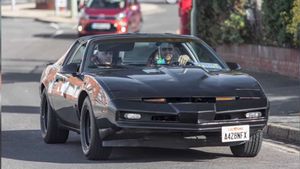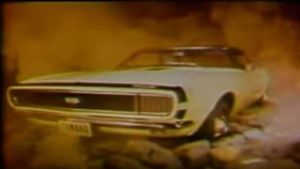Ten of the most memorable – and obscure – cars ever to feature gullwing doors
Mercedes-Benz 300SL

The daddy of them all. Derived from the W194 racing car from 1952, the 300SL was about as exotic as road cars got when it was launched two years later. Aside from its obvious beauty and powerful, fuel-injected straight-six engine, it had one feature that no other car did: gullwing doors. This was more than mere styling trickery, too. The car’s multi-tubular, competition-rooted chassis design necessitated high sills which, when combined with a low roof, would otherwise have resulted in it having very small conventional doors and no graceful means of entry or egress. Gullwing doors were, in short, an inspired idea.
AutoFact: Thanks to the road cars being fitted with direct injection, the 300SL had 220bhp compared to the 175bhp race car upon which it was based.
Lamborghini Marzal

Strictly speaking, this showstopper’s doors weren’t of the gullwing variety as they were hinged along the roof edges rather than the centre of the roof, but who cares? Famously loathed by Ferruccio Lamborghini, this Bertone confection foretold the Espada production car but was a different beast beneath the skin. Powered came from a two-litre ‘six’, which was essentially a Lamborghini V12 unit minus six pots, this was a fully-functional concept car. That said, there was a lot of glass but no opening windows so the cabin got very toasty, very quickly on the move.
AutoFact: It was reproduced in miniature by Lesney for its Matchbox range. Pink was a popular colour.
Autocam AZ-1

There is so much to love about this, the most interesting of that most uniquely Japanese niche vehicle, the Kei car. Less than 5000 were made, far fewer than similarly tiny contemporaries such as the Suzuki Capuccino and Honda Beat, and some of them wore Suzuki badging rather than those of Mazda’s Autozam division. Just to add confusion, the car was actually built by Suzuki for Mazda, but much of the design work was completed in the UK. Powered by a turbocharged, 657cc mid-mounted engine in a tubular steel structure, it was announced in 1992 but production ended inside two years.
AutoFact: A Zagato Abarth-esque variant was built for a wealthy collector which did away with the gullwings.
DeLorean DMC-12

Conceived by a genius car guy or purveyor of the finest snake oil depending on whose estimates you credit, the DMC-12 exists in a netherworld between the actual and the apocryphal. Nevertheless, it has plenty to commend it. The styling by Giorgetto Giugiaro remains striking, even if Il Maestro did his best to talk John DeLorean into opting for more conventional items. Even so, he freely acknowledges that they lend it an air of the exotic (he still refers to John DeLorean as ‘Mr Hollywood’). What’s more, the end result looked remarkably like his original renderings.
AutoFact: In 1981, there was a waiting list with punters willing to pay over the odds to land a DMC-12.
Aston Martin Bulldog

In so many ways, the Bulldog continued from where the firm’s AM Lagonda had left off. Both were styled by William Towns, with the British freelancer pushing the ‘folded paper’ envelope for all it was worth. The Bulldog was undeniably wild-looking but, beneath the aluminium skin, it featured the firm’s proven 5.3-litre V8, complete with twin Garrett AirResearch turbochargers. Power output was said to be in the region of 650bhp, and, while period claims of a 230mph-plus top speed were likely fanciful, the three-years-in-the-making prototype did manage a verified 192mph during its one and only official high-speed test at the MIRA proving ground.
AutoFact: Talk of producing 25 replicas proved to be just rumours. The Bulldog remained a one-off.
Marcos ‘Gullwing'

A chance meeting in a pub between Jem Marsh with Frank Costin led to what in time became the first Marcos (the tag being a contraction of the two principals’ surnames). In early 1959, the pair conceived an ultra-lightweight ‘Clubmans’ car. The resultant device wasn’t attractive, but it could hit 110mph with only a mildly-tuned 1172cc Ford ‘four’. The first car was sold in 1960 to Bill Moss, the former ERA pilot winning nine races from ten starts. Thereafter, Dennis Adams gave the car a styling makeover while his brother Peter set about simplifying chassis construction for what became the production ‘Gullwing’ Marcos.
AutoFact: Sir Jackie Stewart was hugely successful in a ‘Gullwing’ Marcos at the start of this career.
Mercedes-Benz CIII

The CIII in any of its many guises remains one of the more intriguing ‘what might have been’ stories in motoring lore. Powering this Mercedes supercar was an extremely compact three chamber rotary-combustion engine, which displaced 600cc per chamber – the equivalent of a 3.6-litre piston unit. In July 1969, the Bruno Sacco-styled prototype recorded a drag coefficient of just 0.335. Such was the reception to the car internally, the already exhausted test team was told to have the car ready for a series of press demonstrations to coincide with September’s Frankfurt Motor Show. It caused a media furore, but production wasn’t on the cards.
AutoFact: A diesel version was later used for endurance record attempts.
Siva S530

While not an official Aston Martin model, the S530 could conceivably have become one had Newport Pagnell finest’s coffers been fuller. Designed by Siva’s prolific stylist, Neville Trickett, this wedge-shaped device featured a fuel-injected Aston V8 mounted amidships. That, and electrically-operated gullwing doors. The car was reputedly fashioned in four months and displayed on The Daily Telegraph stand at the November 1971 Earls Court Motor Show. It was tested extensively by the British media, and evaluated by Aston Martin, but ultimately remained unique. The British V8 was later replaced with a Chevrolet unit.
AutoFact: The S530 also boasted a rectangular steering ‘wheel’.
Charger

The 1970s and ’80s saw a bewildering number of kit cars come to market with gullwing doors. Most made like the mayfly, but the Charger had sticking power. This VW Beetle-based device was derived from another kit, the Chepeko, which in itself was rooted in the Neville Trickett-styled Siva Saluki. As many as 400 were made from 1977-87, initially by Mike Carlton’s Embeesea Kit Cars based in High Wycombe. However, it later underwent several changes of ownership and name (MDB Saratoga and Viking Dragon Fire) among them. While not a classic of its kind, the Charger was redolent of its era. And now.
AutoFact: An estate car version was offered towards the end, but none was made.
Bricklin

Martin Bricklin made his first fortune importing Subaru 360s into the USA during the 1960s, but is best known for his eponymous SV-1 (Safety-Vehicle One). Powered by AMC and later Ford V8 engines, and equipped with gullwing doors, the prototype was built by beach buggy pioneer Bruce Meyers. The car entered production in 1974 in Canada, but went into receivership three years later owing the New Brunswick government $21m. Aston Martin briefly considered taking over the project, but this scheme was nixed on cost grounds. Bricklin subsequently imported Fiat 124 Spiders and X1/9s into the USA, and later Yugos from 1985-1988.
AutoFact: A Bricklin soared through the air in 1982 crashfest The Junkman.
Pictures courtesy of Rota Archive




